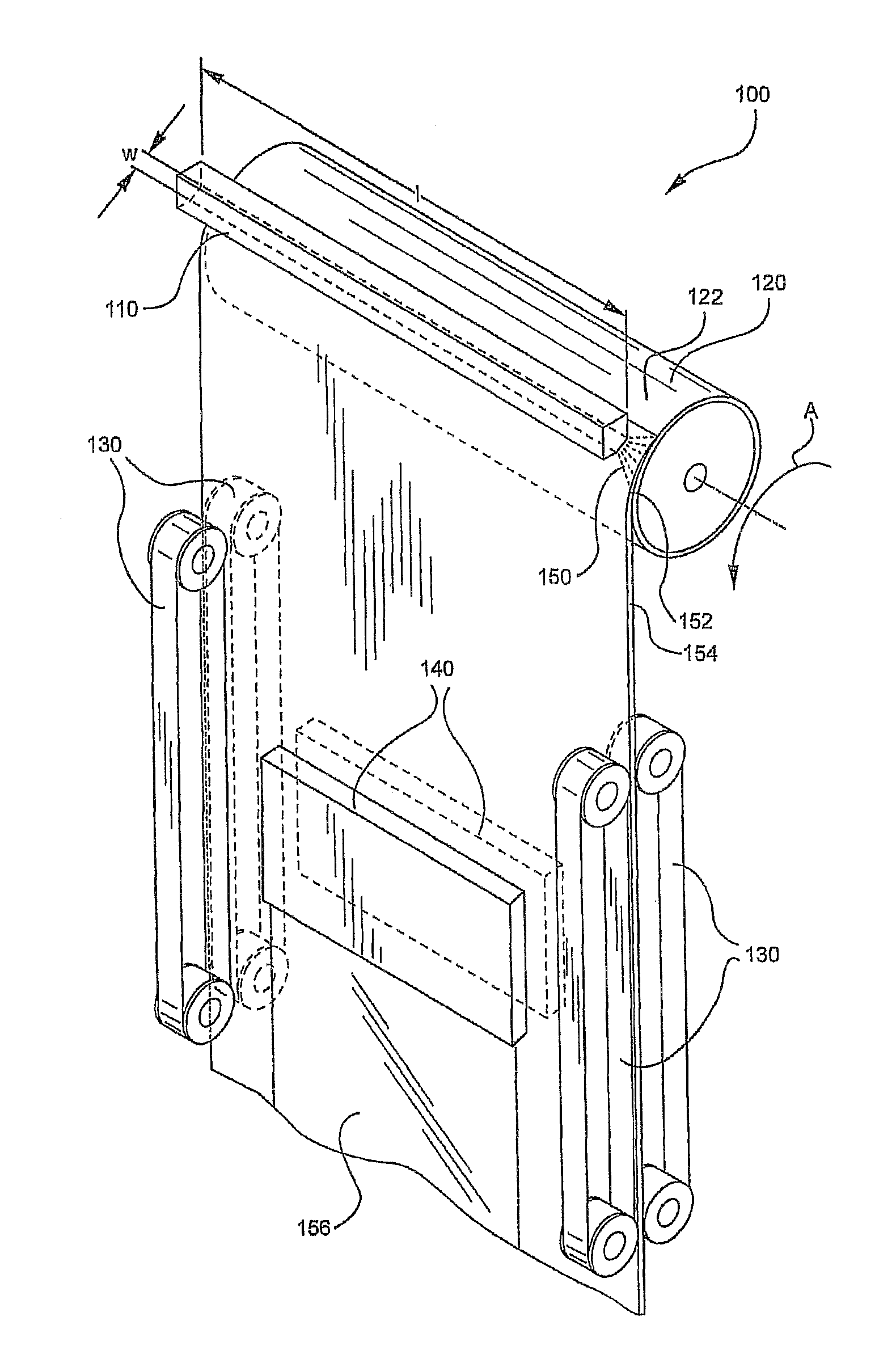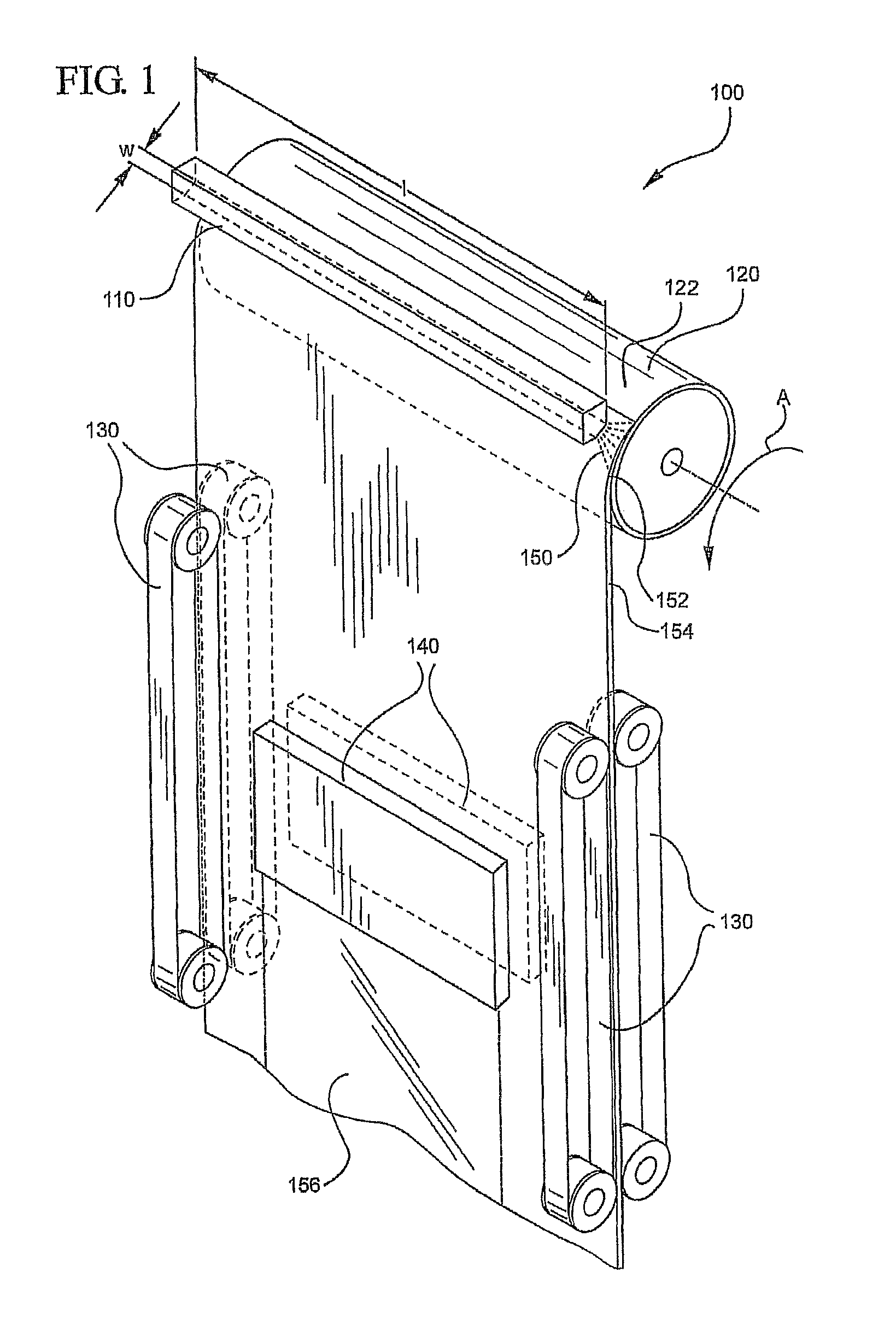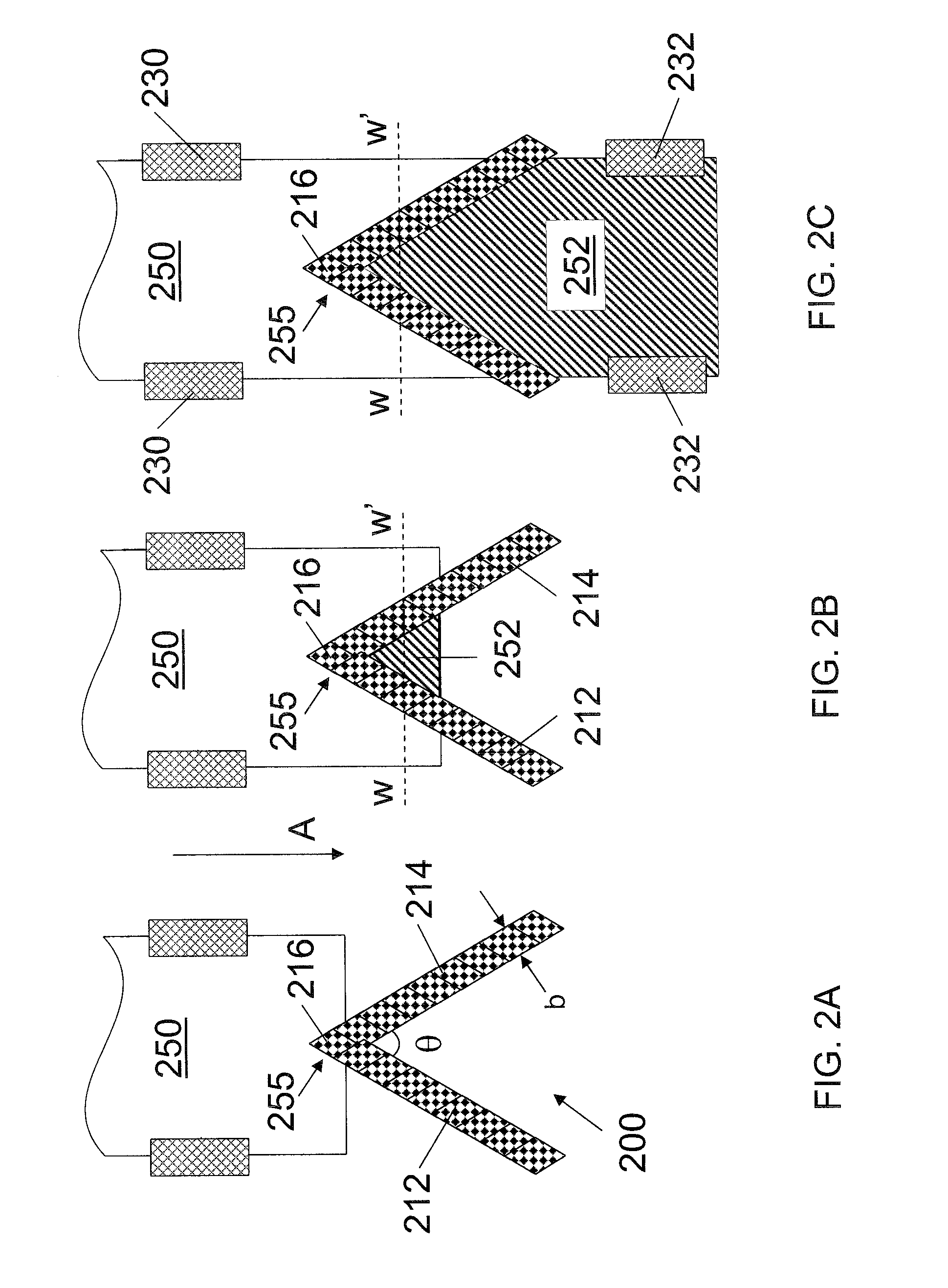Roll-to-roll glass soot sheet sintering method and apparatus
a glass soot sheet and sintering technology, applied in glass rolling apparatus, glass tempering apparatus, manufacturing tools, etc., can solve the problems of unsatisfactory surface quality, added expense, and unsatisfactory surface quality, and achieve the effect of high surface quality
- Summary
- Abstract
- Description
- Claims
- Application Information
AI Technical Summary
Benefits of technology
Problems solved by technology
Method used
Image
Examples
Embodiment Construction
[0013]An apparatus for forming ultra-thin glass sheets is shown schematically in FIG. 1. The apparatus 100 comprises a soot-providing device 110, a soot-receiving device 120, a soot sheet-guiding device 130, and a soot sheet-sintering device 140.
[0014]Glass soot particles formed by the soot-providing device 110 are deposited on a deposition surface 122 of the soot-receiving device 120. The soot-receiving device 120 is in the form of a rotatable drum or belt and thus can comprise a continuous deposition surface 122. The deposited soot particles 150 form a soot layer 152 on the deposition surface 122. The soot layer 152, once formed, can be released from the deposition surface 122 as a free-standing, continuous soot sheet 154. The act of releasing the soot layer 152 from the deposition surface 122 can occur without physical intervention due to, for example, thermal mismatch, a mismatch in coefficients of thermal expansion between the soot layer and the deposition surface and / or under ...
PUM
| Property | Measurement | Unit |
|---|---|---|
| angle of intersection | aaaaa | aaaaa |
| softening point | aaaaa | aaaaa |
| thickness | aaaaa | aaaaa |
Abstract
Description
Claims
Application Information
 Login to View More
Login to View More - R&D
- Intellectual Property
- Life Sciences
- Materials
- Tech Scout
- Unparalleled Data Quality
- Higher Quality Content
- 60% Fewer Hallucinations
Browse by: Latest US Patents, China's latest patents, Technical Efficacy Thesaurus, Application Domain, Technology Topic, Popular Technical Reports.
© 2025 PatSnap. All rights reserved.Legal|Privacy policy|Modern Slavery Act Transparency Statement|Sitemap|About US| Contact US: help@patsnap.com



